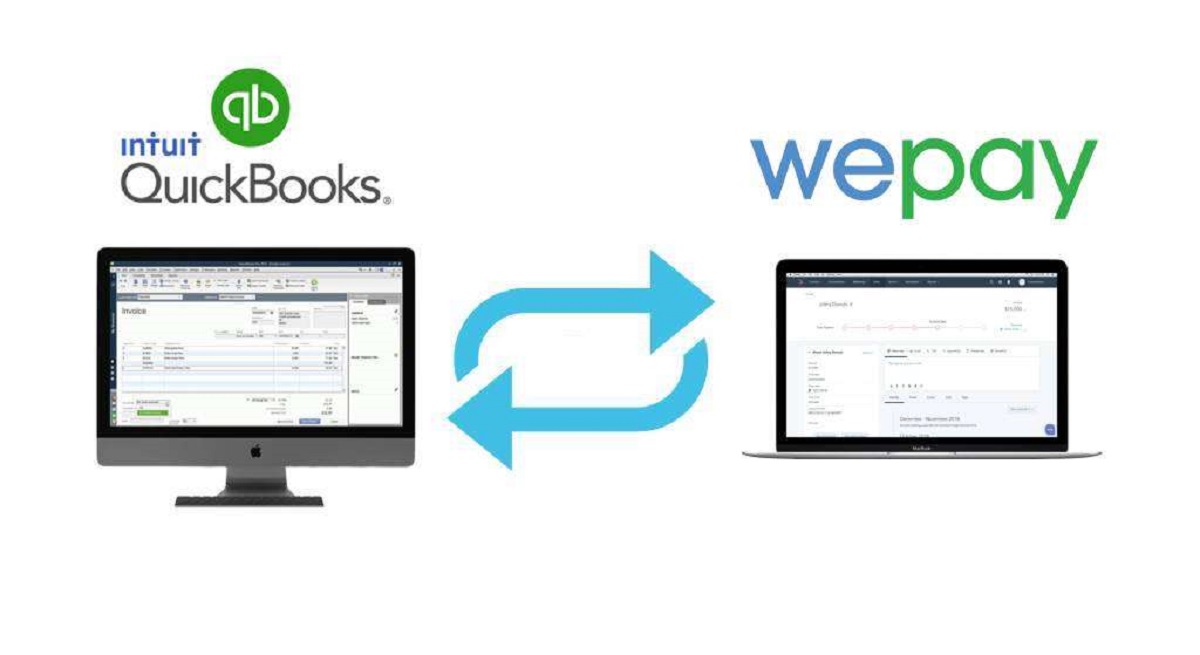Introduction
Fintech, short for financial technology, refers to the use of technology to provide innovative financial services. Over the past decade, fintech has rapidly grown, revolutionizing the way we manage our finances. From mobile payments to blockchain technology, fintech has opened up new possibilities, making financial transactions faster, more convenient, and more accessible than ever before.
There are four key categories of fintech that have gained considerable traction in recent years, each offering unique benefits and opportunities. In this article, we will explore these categories and discuss how they are reshaping the financial landscape.
As technology continues to evolve, it’s important to stay informed about the latest trends in fintech. Whether you’re a consumer looking for convenient payment options or an investor exploring new opportunities, understanding the different categories of fintech can help you navigate this rapidly changing industry.
So, let’s dive into the four main categories of fintech and discover how they are transforming the world of finance.
Mobile Payments
Mobile payments have become increasingly popular as the use of smartphones and mobile apps has become ubiquitous. This category of fintech allows users to make financial transactions directly from their mobile devices, eliminating the need for cash or physical credit cards.
With mobile payment apps like Apple Pay, Google Pay, and Samsung Pay, users can securely link their bank accounts, credit cards, or digital wallets to their smartphones. This enables them to make payments by simply tapping or scanning their devices at point-of-sale terminals or through online merchants.
The convenience of mobile payments cannot be underestimated. Users no longer need to carry bulky wallets filled with cash or multiple credit cards. Instead, they can make purchases with just a few taps on their smartphones.
In addition to convenience, mobile payments also offer enhanced security. Most mobile payment apps utilize advanced encryption and biometric authentication, such as fingerprints or facial recognition, to ensure secure transactions. This adds an extra layer of protection against fraud and unauthorized access to personal financial information.
Mobile payments are not only beneficial for consumers but also for businesses. By accepting mobile payments, merchants can streamline their payment processes, reduce the reliance on cash, and provide a seamless checkout experience for their customers.
The widespread adoption of mobile payments is driving the shift towards a cashless society. As more and more merchants embrace mobile payment technologies, the need for physical currency decreases, making financial transactions quicker and more efficient.
Overall, mobile payments represent a significant advancement in the world of fintech. They offer convenience, security, and efficiency, revolutionizing how we make payments in our day-to-day lives. With the continued development of mobile payment technologies, we can expect even more innovative solutions to emerge, further transforming the way we handle our finances.
Robo-Advisors
Robo-advisors are an innovative category of fintech that has disrupted the traditional investment landscape. These automated investment platforms use advanced algorithms and AI technology to provide personalized financial advice and manage investment portfolios on behalf of users.
Gone are the days when investing was limited to wealthy individuals with access to professional financial advisors. Robo-advisors have democratized investing by making it accessible to anyone with an internet connection and a small amount of capital to invest.
Using a robo-advisor is simple. Users typically start by answering a series of questions about their financial goals, risk tolerance, and investment preferences. Based on this information, the robo-advisor algorithm generates a customized investment plan and automatically allocates funds across a diversified portfolio of assets.
One of the greatest advantages of robo-advisors is their ability to provide cost-effective and transparent investment services. Unlike traditional financial advisors who often charge high fees or require minimum investment amounts, robo-advisors offer low-cost investment options with no or minimal account minimums.
In addition, robo-advisors leverage technology to constantly monitor and rebalance investment portfolios according to market conditions. This ensures that the portfolio remains aligned with the user’s investment goals and risk tolerance, optimizing returns and minimizing risks.
Moreover, robo-advisors provide users with real-time access to their investment accounts, allowing them to track performance, make adjustments, and review financial reports at their convenience. This level of transparency empowers users to have a deeper understanding of their investments and make informed decisions.
Although robo-advisors operate primarily through automated processes, they also incorporate human expertise when necessary. Many robo-advisory platforms have a team of financial professionals who oversee the algorithms, ensuring that the technology is continuously improving and adapting to changing market conditions.
Robo-advisors have disrupted the traditional investment industry, providing individuals with accessible, cost-effective, and personalized investment services. With their ease of use, low fees, and algorithm-driven investment strategies, robo-advisors are here to stay, reshaping the way people invest and manage their wealth.
Peer-to-Peer Lending
Peer-to-peer lending, also known as P2P lending or marketplace lending, is a category of fintech that connects individuals or businesses in need of loans with investors willing to lend money. By leveraging online platforms, P2P lending provides an alternative to traditional banking institutions by directly matching borrowers and lenders.
One of the main advantages of P2P lending is the potential for lower interest rates compared to traditional banks. By cutting out the middleman, borrowers can often secure loans at more affordable rates, while investors can earn higher returns on their investments than what traditional savings accounts or bonds offer.
P2P lending platforms employ sophisticated algorithms to assess the creditworthiness of borrowers and assign them a risk profile. This allows investors to diversify their investments across a range of borrowers based on their risk appetite. The platforms also ensure that proper legal procedures are followed and offer secure channels for loan repayments.
Furthermore, P2P lending opens up opportunities for borrowers who may not meet the strict requirements of traditional lenders. It allows individuals and small businesses with less-established credit histories or unconventional income sources to access financing that may have been previously out of reach.
Borrowers can benefit from the streamlined application and approval process offered by P2P lending platforms. These platforms use digital documentation and online verification methods to simplify the loan application process, significantly reducing the time it takes to obtain funds. Additionally, the transparency of P2P lending platforms enables borrowers to compare loan offers and choose the most favorable terms for their needs.
On the other side, P2P lending allows investors to diversify their investment portfolios by allocating funds across multiple loans to minimize risk. They have the flexibility to choose the risk level and loan terms that align with their investment objectives. P2P lending platforms provide detailed borrower information and data analytics, empowering investors to make informed lending decisions.
Overall, P2P lending has emerged as a viable alternative to traditional lending models, catering to the evolving needs of both borrowers and investors. By utilizing technology, P2P lending platforms bridge the gap between those seeking loans and those seeking investment opportunities, fostering financial inclusivity and creating a more efficient lending landscape.
Blockchain and Cryptocurrencies
Blockchain and cryptocurrencies have rapidly gained attention in the world of fintech, offering secure and decentralized solutions for financial transactions. Blockchain, the underlying technology behind cryptocurrencies, is a distributed ledger that records and verifies transactions across multiple computers, ensuring transparency and immutability.
Cryptocurrencies, such as Bitcoin and Ethereum, are digital or virtual currencies that utilize blockchain technology to facilitate peer-to-peer transactions. Unlike traditional currencies issued by central banks, cryptocurrencies operate independently of any governing authority, making them immune to manipulation or control.
One of the key advantages of cryptocurrencies is their ability to provide secure and fast cross-border transactions. Traditional financial institutions often involve multiple intermediaries and can take days or even weeks to process international transfers. With cryptocurrencies, transactions can be executed within minutes, bypassing intermediaries and reducing costs.
Moreover, blockchain technology has the potential to revolutionize various sectors, including banking, supply chain management, and digital identity verification. The decentralized nature of blockchain allows for more efficient and transparent processes, eliminating the need for intermediaries and reducing the risk of fraud.
Cryptocurrencies also offer individuals the opportunity to participate in decentralized finance (DeFi) applications. DeFi platforms enable users to access financial services like lending, borrowing, and earning interest without relying on traditional financial institutions. This provides greater financial autonomy and inclusivity for individuals who may not have access to traditional banking services.
Despite the advantages, cryptocurrencies also face challenges, such as volatility and regulatory concerns. The value of cryptocurrencies can experience significant fluctuations, making them a high-risk investment. Additionally, regulatory frameworks around cryptocurrencies are still evolving, with governments worldwide grappling with how to effectively oversee this emerging asset class.
Nevertheless, the potential of blockchain technology and cryptocurrencies to reshape the financial landscape cannot be ignored. As more industries and individuals embrace the benefits of decentralized systems and digital currencies, we can expect to see further advancements and transformative applications in the fintech world.
Conclusion
The fintech industry has witnessed remarkable growth in recent years, thanks to innovative technologies and disruptive solutions. We explored the four main categories of fintech that are reshaping the financial landscape: mobile payments, robo-advisors, peer-to-peer lending, and blockchain and cryptocurrencies.
Mobile payments have revolutionized the way we make transactions, offering convenience, security, and efficiency. With just a few taps on our smartphones, we can make purchases without the need for physical cash or credit cards.
Robo-advisors have democratized investing, providing personalized investment advice and portfolio management to individuals. They offer low fees, transparency, and automation, making investing accessible to a wider audience.
Peer-to-peer lending platforms have disrupted traditional banking by connecting borrowers and lenders directly. They offer lower interest rates, streamlined processes, and opportunities for individuals and small businesses who may have difficulty accessing loans through traditional channels.
Blockchain and cryptocurrencies are transforming financial transactions by offering secure, decentralized, and borderless solutions. Cryptocurrencies provide fast and cost-efficient cross-border transactions, while blockchain technology has the potential to revolutionize various industries.
As technology continues to advance, the fintech industry will likely witness further innovations and disruptions. It is crucial for individuals, businesses, and investors to stay informed about the latest trends in fintech and adapt to the changing landscape.
With the continued growth of mobile technology, the rise of AI and machine learning, and the expanding acceptance of blockchain and cryptocurrencies, the future of fintech holds immense potential. Embracing these advancements can enhance financial inclusion, transparency, efficiency, and empowerment for individuals and businesses worldwide.
So, whether it’s using your smartphone to make mobile payments, exploring robo-advisors for investment opportunities, seeking loans through peer-to-peer lending, or exploring the potential of cryptocurrencies, embracing fintech will empower you to navigate the evolving world of finance with ease and efficiency.

























